PPC
3 Easy steps to complete your annual PPC checkup

The crazed dash to wrap up 2019 and close the books on a banner year for PPC may have left search marketers feeling wiped out right about now. Buck up, search marketers! 2020 is here and those who want to dominate search marketing need to start the year on the healthiest footing possible.
Great planning and powerhouse strategies require deep analysis of what has been working and what hasn’t. You need to identify early signs of problems, know where opportunities exist, and be even more crisp at keeping key stakeholders posted about how your hard work is ensuring the overall health of their campaigns. Sounds a bit like an annual checkup at the doctor!
2020 promises to be another year of change for the tech and data we rely on daily, so our team has developed a health plan for your paid search programs — a 2020 checkup that can put your programs on the right trajectory from day one.
From checkup to preventive care to reporting, with the right technology, it may be easier than you think to make your PPC account the healthiest it’s ever been.
The Account Checkup: Assess your overall changes in health
The first thing a doctor does before developing a plan for your physical health is order a full health assessment. This can be tedious in PPC if done manually, but tools can make the process virtually painless.
Optmyzr has a powerful one-click annual report to review last year’s account health. For those who have been using Optmyzr reports for a while, the assessments run quite deep with a variety of unique data visualizations in addition to all the standard PPC reporting widgets one would expect.
While the one-click annual report for 2019 in review is a great first step, PPC pros will want to take advantage of multi-account reporting capabilities that tap into the data across all accounts and campaigns to provide a flexible view into the most critical data about all PPC programs. Of course, good PPC pros excel at ongoing reporting for clients at regular intervals, whether daily, weekly, monthly or quarterly. Great PPC pros, however, use the transition to a new year to do a more full-blown assessment for their own well being.
What can the annual one-click report tell us? More than you might think.
Start with year-over-year data. Compare how 2019 overall stacked up against 2018. This full-year view can unearth a lot about subtle trends, cyclical activities by client, slow erosions across critical metrics, and much more.
For PPC agencies, the full-year report may help identify aggregate changes by industry, efficiency gains or gaps in how clients are managed, performance comparisons across Google, Bing, Facebook, and Amazon, or a wide range of other views into the overall health of the business.
Here’s a prime example.
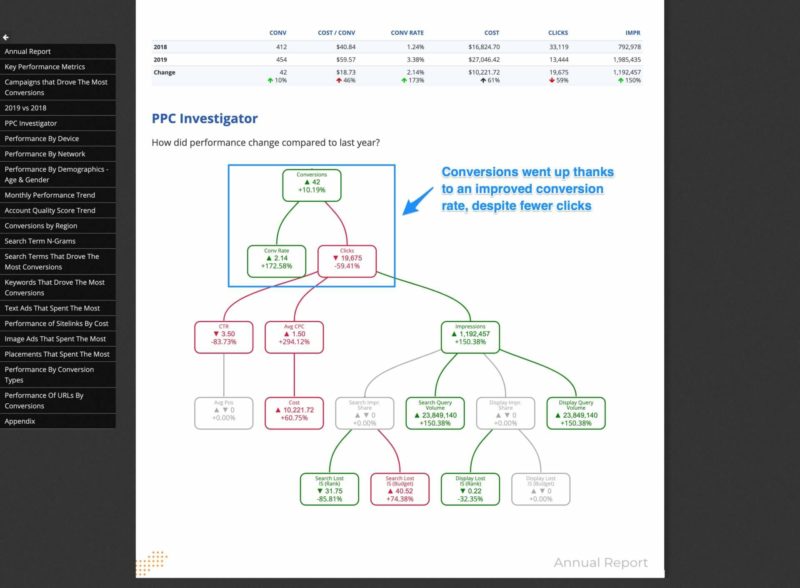
In this screenshot from an Optmyzr report, one can see that conversions went up despite a decrease in clicks. This points to a more targeted ad buy in 2019 compared to the year before.
As with your personal physician, the longer you keep seeing a great doctor and follow her advice for getting healthier, the more you’ll see improvements to your overall health. The same holds true for Optmyzr. The longer you drive your PPC programs through our tool, the better optimized the account will be and the deeper your own insight into your PPC health.
Preventive care: Set benchmarks and track them
Account audits foster exceptional discipline and adherence to plans. Trouble is, fully auditing a wide range of campaigns and programs can appear to be a daunting task. As a result, many PPC pros think of audits as a year-end concept — one of those “must do” items that feels more like drudgery than anything else.
Break that line of thinking and redirect to a productive, strategic cycle in 2020.
Auditing accounts is much easier than you may think. In fact, auditing should be viewed as part of the ongoing practice of running accounts across all clients. The Optmyzr Audit tool can serve as the year-round guardian for search marketers, uncovering mistakes, anomalies, and other issues long before they become big problems.
The PPC Policy & Audits tool makes it easy to set up repeatable audit reports that scour your portfolio of projects. It automates analysis of critical structural elements and overall campaign metrics at a much deeper level. Use the tool to uncover structural problems earlier, such as not having sufficient ad variations in ad groups, repeating the same headline too often, using the wrong attribution models, or finding which ad extensions are being used inconsistently across campaigns.
If you’d like to see a sample audit for an account you manage, you can try the tool for free here: https://tools.optmyzr.com/free/signup
The following example underscores the value of regular auditing.

The more frequent audits are done, the faster you and your team can redirect and solve problems. Far too often, PPC pros find themselves in Q4 thinking “I wish we knew about that back in Q1.”
Audits are the key to effective preventative care and maintenance throughout the year.
Reporting: Surface the data and metrics that improve your life
When you meet with your physician throughout the year, they keep the critical data points close at hand. Having the complete picture of health is essential, including a view into the good, the bad, and the ugly.
Think of this framework for how you structure reporting throughout the year. Avoid the temptation to only report on the things that make you look good. If a physician only reports back to a patient that they have lost weight while ignoring dangerously high blood pressure, they do their patient a gross disservice.
In PPC, holistic reporting is essential for long-term success and growth. Critical metrics on a single dashboard with capability to maneuver within the data for cause-effect relationships can build trust with clients and empower the PPC practitioner to become much more strategic and a value-add in the marketing mix.
Optmyzr Campaign Reports include data insight visualizations that go beyond numbers in spreadsheets. They illustrate trends and knowledge through trend charts, geo heatmaps, hour-of-week performance, Quality Score tracking, and word clouds — just to name a few.
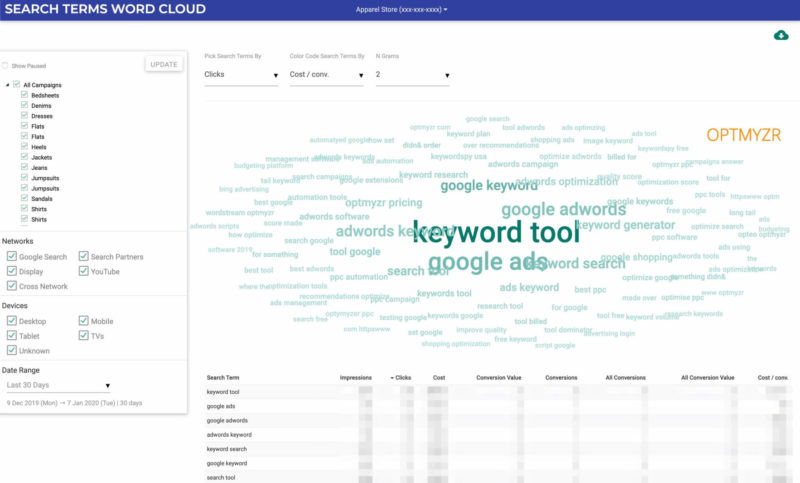
Powerful reporting uses easy to understand visuals that use commonly understood terms rather than industry jargon to help clients and internal stakeholders see the full picture (literally) and keep everyone on the same page. PPC pros become higher value strategists, with the ability to author defensible strategic recommendations based on data and insights that everyone can better understand. Powerful reporting then allows that same PPC pro to prove or defend their strategic decisions.
An apple a day…
The old adage about apples being the key to good health may seem like something Grandma would say, but it holds very true in many areas of life. Take that same concept to the world of PPC for unprecedented foresight in 2020. Start early with the one-click report for your full health checkup looking back at 2019 and even earlier. Get yourself on a preventative care regimen with tracking and auditing that keeps you in-the-know about PPC health much faster than in years past. Then set up essential reporting that illustrates critical information in an easy-to-use format.
Optmyzr has invested heavily in tools that promote great PPC health. They are designed to be easy and fast to set up and use. The end result can yield exceptional results and keep you several steps ahead of problems that, if left unchecked, could be devastating.
Healthier PPC living in 2020 with Optmyzr. Check out how easy it is with a free trial, or talk with one of our reps. We want to make this year your healthiest and most prosperous one yet.
About The Author

Optmyzr’s PPC management platform provides intelligent optimization suggestions that help advertisers across the world manage their online advertising more effectively. Optmyzr connects with AdWords, Bing Ads, Facebook Ads, Google Analytics, Google Merchant Center and Google Sheets. The company was founded by former Google AdWords executives. The Optmyzr PPC suite includes over 20 tools to improve Quality Score, manage bids, find new keywords, A/B test ads, build new campaigns, manage placements, automate budgets, and automate reports. Optmyzr’s excellence in PPC management software was recognized at the 2015 US Search Awards and the 2017 MENA Search Awards.
PPC
How to Collect & Use Customer Data the Right (& Ethical) Way

Customer data is extremely valuable for many reasons, and one of the biggest is to make your marketing more effective. Customer data can act as the foundation for your marketing strategy, help you optimize and refine your campaigns, and influence the marketing messages you create.
But as privacy becomes even more important and customers pay more attention to how businesses are collecting, storing, and using their information, this is turning into a pretty big challenge for businesses—especially smaller, local businesses. So in this guide, we’ll cover everything you need to know about collecting and using customer data the right way to keep your marketing and targeting super effective.
Contents
What is customer data?
Customer data is any information about your customers or potential customers. It includes demographic information, contact information, and more (we’ll get into the types of customer data in a minute!).
It’s important to collect customer data so you can refine your campaign targeting, build segmented email lists, learn more about your audience, and more.
Before we dive into the types of customer data, let’s talk about the different sources of data:
- Zero-party data: Data customers give to businesses willingly.
- First-party data: Data businesses source directly from their customers.
- Second-party data: Data businesses have access to that they didn’t collect and don’t own. This data can come from a partner sharing data or insights.
- Third-party data: Data businesses use that have no ties to the business. This is typically collected from multiple sources and can be purchased by businesses for specific campaigns or research.

Zero- and first-party data are the best types of data collection sources to use when sourcing customer data. Why? Because they are the most transparent, least likely to infringe on privacy policies, and lead to more engaged customers and campaigns. Second- and third-party data are still helpful to inform your marketing strategies and help boost the effectiveness of other campaigns.
Types of customer data
There are four main types of customer data that you can collect—and they can help your business’s marketing efforts in different ways.
Basic data
Basic data is pretty self-explanatory. It’s the basic information about your customers, including their:
- Name
- Email address
- Phone number
- Address
- Gender
- Income
- Industry
- And more
This is essentially demographic data. Basic data is fairly easy to collect as many people are used to providing their names, email addresses, phone numbers, and addresses when placing an online order, downloading a piece of content, or signing up for a newsletter.


This information can provide the basis for your campaign targeting, can help you assess which marketing channels to use, and can inform several marketing strategies.
📚 Free guide download >> 135 of the Best Words & Phrases for Marketing with Emotion
Engagement data
Engagement data is information about how your customers engage with your business across various touchpoints. This could include their engagement with your social media sites, how they click through your website, or whether or not they click on your search ad.
Typically, businesses collect this data at a higher level rather than an individual level. Although some tools can help you see this information at a user level.


An example of engagement data for a business’s Facebook page.
This customer data can be used to assess the effectiveness of your marketing efforts, identify specific campaigns or messages that are resonating with your brand, and inform areas for improvement in your marketing strategy.
Attitudinal data
Attitudinal data is information about how customers feel about your business and your products or services. This customer data is extremely useful but is more difficult to collect.
Because this type of data comes straight from your customers, it’s usually collected as a survey or review.
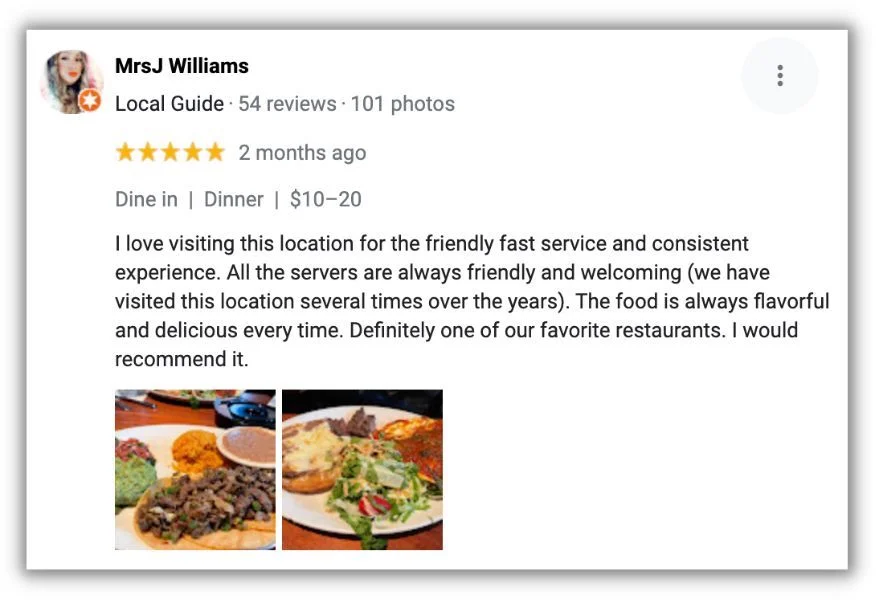

Attitudinal data can help you improve your marketing campaigns, your products and services, and your overall business operations.
Behavioral data
Behavioral data is information about how customers engage directly with your products or services. This includes past purchases, appointments scheduled, items added to a cart, and more.
This information can be collected through a variety of sources, such as a lead management platform, a POS system, and more.
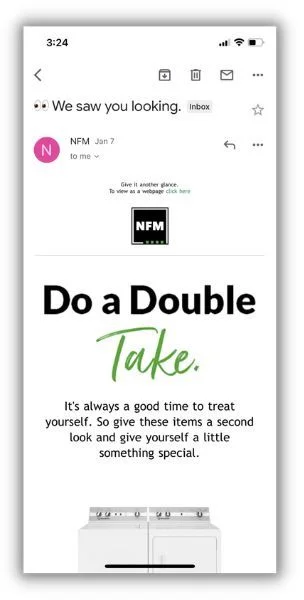

Behavioral data can impact your nurture campaigns, promotions, and more.
How to collect customer data
There are many different ways to collect customer data without infringing on your customers’ rights or violating their privacy. We’re going to focus on some zero- and first-party customer data collection methods.
Here are some options for collecting customer data.
1. Build an email list
Building an email list is one of the best ways to collect customer data. You can build an email list in many different ways, including:
- Having people sign up for your newsletter
- Adding a contact form to your website
- Adding a contact form to your landing pages
- Creating a quiz where customers get their results in exchange for an email address
- And a few other options we’ll talk about shortly


Building an email list will help you collect basic and engagement data and set the stage to help you collect additional data through some of our other ideas.
🛠️ Get the tools and tips you need to build the perfect landing page in our free guide >> How to Make Great Landing Pages (with Crazy-High Conversion)
2. Send a survey
One of the best ways to learn more about your customers and prospects is to ask them! You can do this through surveys, which can be sent via email, added as a link on your website, or included as a link on your invoicing or receipts.
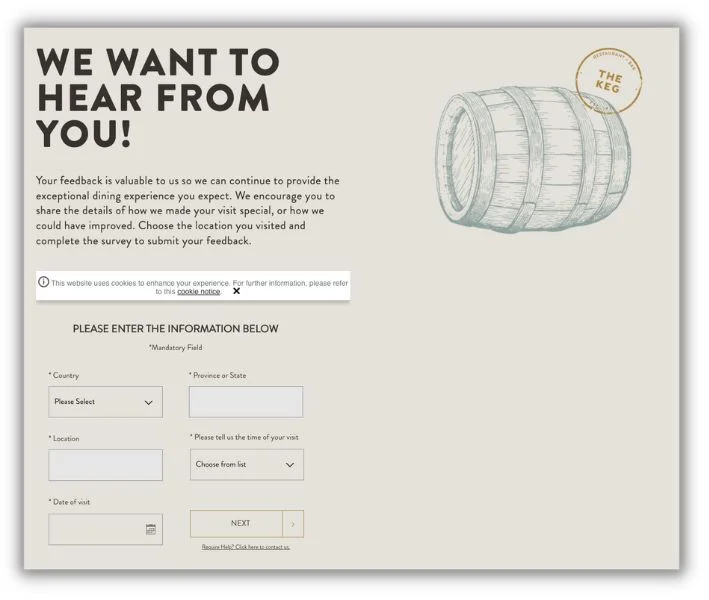

The questions in your survey will depend on the type of customer data you’re hoping to collect.
For example, if you want to collect basic data, your survey will likely read more like a lead collection form that includes spaces for your customer’s name, phone, number address, and occupation.
If you want to collect the ever-elusive attitudinal data, your survey will focus more on how customers perceive your business, your products, and your services.
You can also survey your customers to find out information that may influence behavioral data, such as what social media sites they’re active on, where they’ve seen your business online, and what types of content they’re interested in seeing from your business.
3. Run a contest
Whether you’re looking to build your email list or see a change in engagement data, running a contest is a great customer data collection method.
In exchange for the valuable information you’re collecting from your customers, you’ll want to make sure the prize is compelling and that you promote your contest on the channels your customers are most likely to engage—probably social media, through email, and on your website.


4. Use a lead management system
One of the best ways to collect customer data and learn more about your customers is by using a lead management system. A lead management system tracks where your leads are coming from, how they’ve engaged with your business online, and their behavior with your products or services.
A lead management system that uses a single lead inbox can also aggregate your customer data and help you identify interesting trends that can impact your overall marketing strategy and how you spend your budget.
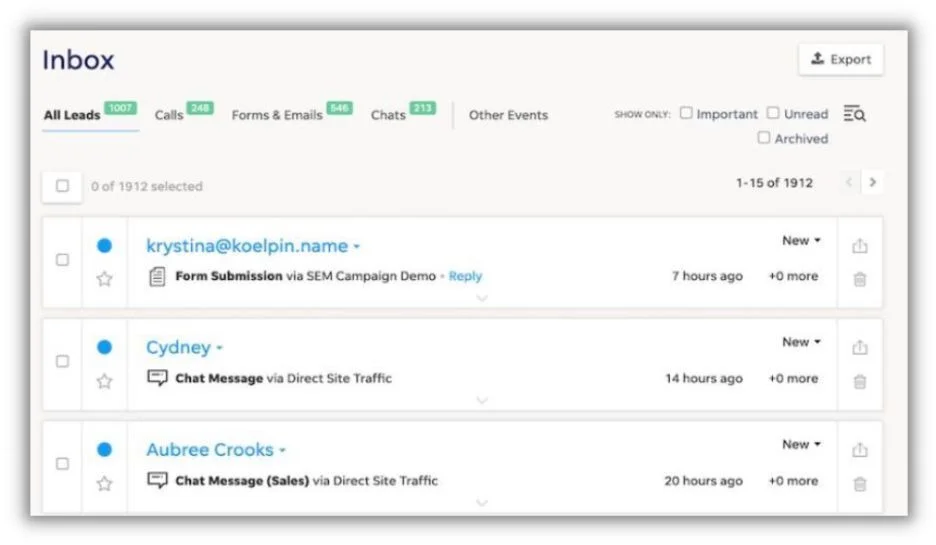

This data customer collection method can also help you learn more about your specific customers’ journey—including how many touchpoints it takes a lead to convert or what marketing channels convert at the highest rate.
5. Offer a free downloadable resource
Another great way to build your email list and collect customer data is to provide a free downloadable resource that relates to your business.
While this is a popular tactic in the B2B world, it can also work really well for B2C businesses. For example, a cleaning business can provide a downloadable spring cleaning checklist or a dentist can provide a downloadable guide on the foods to avoid for healthy teeth.
The goal is to make your resource compelling enough for a prospect or customer to provide their information in exchange for what you’re offering.
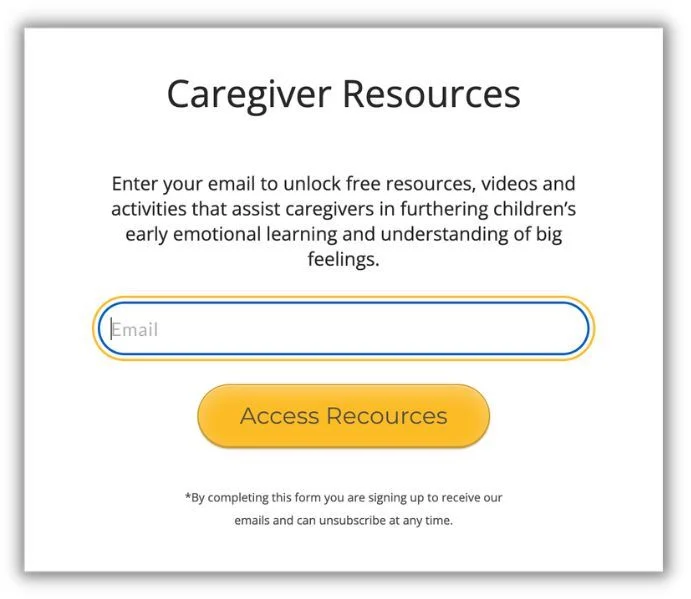

By offering multiple downloadable resources, you can also collect customer data about the topics that drive the most downloads and tailor your content creation or campaigns to those topics or messages.
How to use customer data for marketing
We’ve touched a little on how the types of customer data can impact your marketing, but let’s dive a little deeper now that you have some ideas on how to collect it.
Identify the right marketing channels
When you understand more about your customers, including their demographic information and where they spend time online, you can choose the right marketing channels that will make the biggest impact on your business.
For example, if you know that most of your customers are Gen Zers, then you can assume that TikTok, Snapchat, and Instagram will be big drivers for your business.
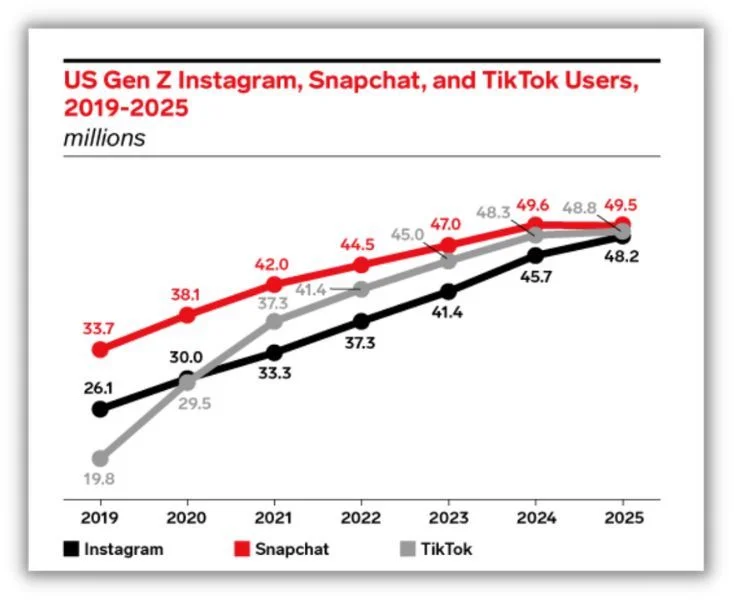

Or, if through a survey, you find that most of your current customers found your business on Google, then you might consider focusing more of your marketing efforts on search ads and SEO so you can capture more customers there.
Through collecting customer data, you may also identify some new channels that you hadn’t considered—which can help you test new strategies and make your marketing even more effective.
Refine marketing messages
When you understand how your customers engage with your business, what drives them to make a purchase with you, and their top pain points, you can better refine your marketing messages. This helps you personalize your marketing strategy to your most likely customers, which can drive better results.
For example, after sending a survey to your plumbing customers, you may have found that most of them value your quick response time to emergency jobs. You can then use this information in your ad copy, on your website, and in your social media posts to influence potential new customers to give you a call or think of you when they have an emergency.


Optimize campaigns
Better understanding your target market through customer data is extremely helpful for optimizing your campaigns and overall marketing strategy.
And even the most basic data about your customers can help. For example, location data makes up the foundation of many paid advertising campaigns, so by understanding that most of your customers are in a specific suburb, you can optimize your ad targeting to reach them.


You can also optimize your ad copy using feedback from your refined marketing messages and identify specific searches that drove customers to your website or to click on your ad.
🎯 Need targeting help? Get the guide >> 10 Facebook Ad Targeting Strategies That Work In a Privacy-First World
Personalize your marketing
Personalization is no longer a “nice to have” when it comes to effective marketing. It’s a necessity. And you can’t personalize your marketing without access to customer data.
Customer data can help you segment your audiences, which leads to better-targeted ad campaigns or email marketing messages.
For example, within your lead management system, you could tag customers who previously purchased your teeth whitening package and then send them emails about teeth whitening specials or content on how to keep your teeth clean, since this is likely a topic they’re interested in. These targeted messages can help customers feel like they’re getting a personalized experience and lead them to take action.


Customer data can also help influence the type of content you create, which helps create a more personalized experience for your customers. This content can be distributed across social media, your website, your newsletter, and more, which leads to more engagement on your marketing channels.
Influence nurture sequences
When you collect customer data that helps you understand your buyer’s journey, you can create nurture sequences meant to increase conversions.
Email nurturing is when you send a series of emails meant to drive prospects through the sales funnel until they convert into a customer.
By collecting customer data about how your customers engage with your business throughout the funnel, you can optimize your nurture sequences to identify the right path for segments of potential customers.
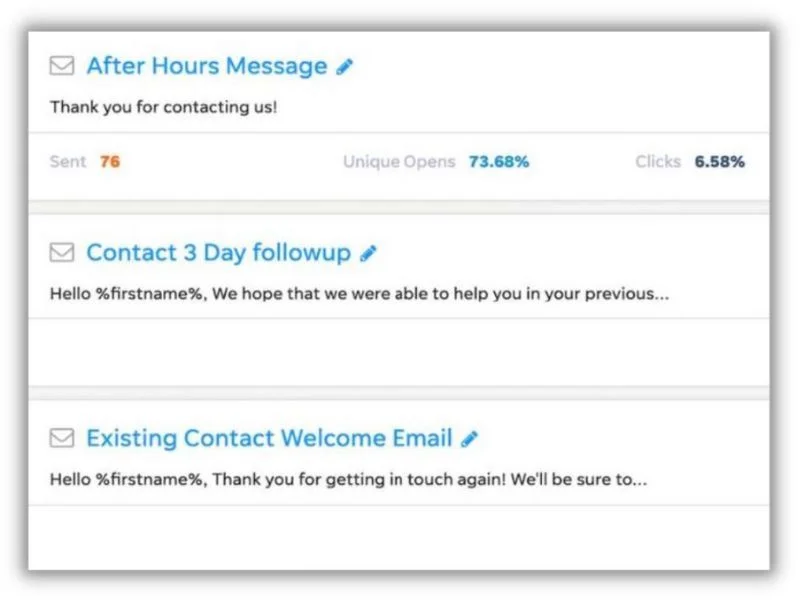

For example, say you’re an SAT prep center. You might find that an email with tips for helping your child study for the SATs followed by an email from a parent and student testimonial who received stellar scores after preparing with your SAT prep center drove a high volume of calls or classes scheduled. That would then be a compelling nurture sequence to continue testing for better results.
Tips for ethical customer data collection and storage
We can’t end this post without touching on some important tips for collecting and storing customer data.
- Include unsubscribe buttons: Every email you send to your email list should include an unsubscribe button so people can opt out at any time.
- Create a privacy policy—and publish it on your website: A privacy policy that outlines how you collect, use, and store customer data is essential. Make sure to publish it on your website and include it any time customers are providing their data or opting into your email list.
- Protect customer data: Any business that collects customer data is at risk for a security breach. Take extra steps to protect your customers and their data.
- Be transparent: Communicate with your customers or prospects if a breach happens, if you update your privacy policy, or if there’s any threat to their data.
- Try a double opt-in: A double opt-in is becoming more standard as it ensures customers know what information they’re providing to businesses. It can also lead to a more engaged email list!
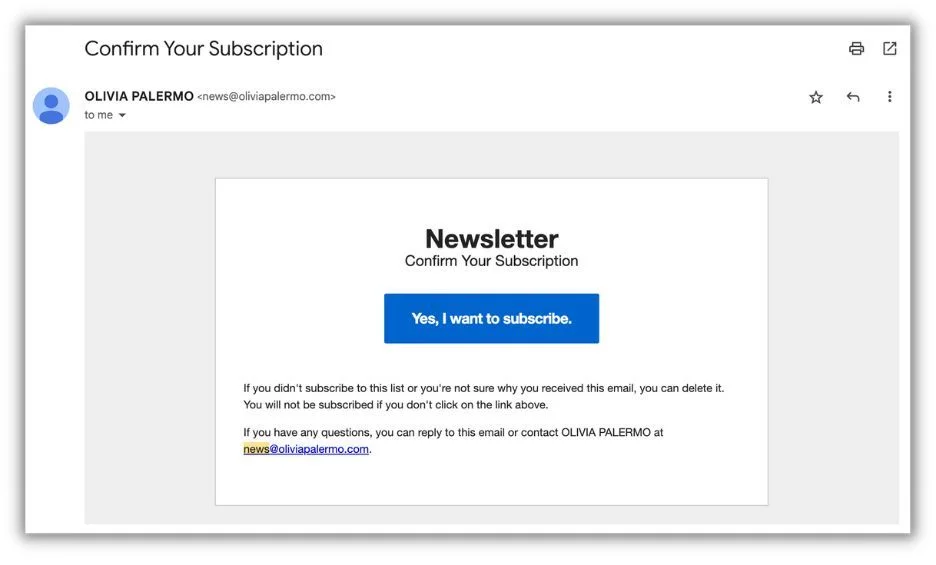

Example of a double opt-in email.
Collect and use customer data the right way
Collecting and using customer data can be tricky—if you don’t do it right. By using these zero- and first-party collection methods, you can get access to valuable customer data without infringing on your customers’ rights or making customers feel uncomfortable.
As second- and third-party data collection become murkier, these methods will help you find customer data and use it right.
PPC
4 New Google Ads Performance Max Updates: What You Need to Know

Ever since the launch of Performance Max (also sometimes called PMax) campaigns in 2021, Google has continuously doubled and tripled down on the new campaign type. Originally, most tools were focused on making it easy to “upgrade” your existing campaigns to PMax, whether it be Shopping, Dynamic Search Ads, or Display.
In recent months, there have continued to be countless updates to the Performance Max campaign ecosystem, but in my mind, they almost exclusively focus on two main areas: creative assets and targeting controls. In this post, I want to walk you through a few of the updates (although certainly not an exhaustive list) that have come out recently and what these trends mean overall for your Performance Max campaigns.
Contents
Updates to Performance Max creative assets
We all know our creatives are the first impression (sometimes literally) our brands can have on our customers. With Performance Max campaigns running across all Google-owned properties, there’s a very wide range of possibilities of what your ads could look like depending on what you provide. It’s becoming more clear that Google is not going to settle for subpar creatives. Here are a couple of updates (announced in the same post) they’ve rolled out recently that lean into this idea.
🚨 Get an instant read on your Google Ads Performance Max campaigns with our free Google Ads Grader!
1. Ad strength now impacted by creative count and diversity
From the beginning with Performance Max ads, you were able to provide multiple different images, videos, and other text assets to support your creatives. The performance you saw would rely a good amount on how good those assets were.

But in early 2024, as you can see above, Google announced that now the number and diversity of those assets will have an impact on your ad strength. While I don’t believe you should use ad strength as a KPI for your company, you need to pay attention to it since these are the factors Google now finds important.
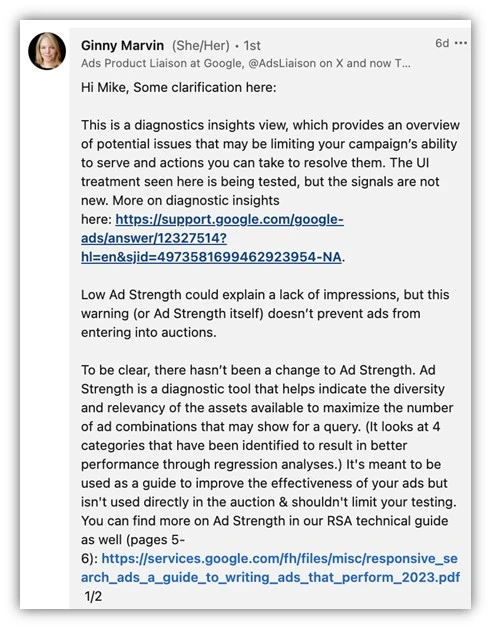

It’s also incredibly important for me to note that this does not impact the competitiveness of your Performance Max Asset Groups. The goal of these changes is to improve the diagnostics tool view for Google and help you optimize your ads. Ginny Marvin, Google Ads Liaison, clarified by saying that the components of ad strength had not changed and that low ad strength could be a reason why you’re not getting impressions but won’t prevent you from entering the auction.
If you’re up against another advertiser in the auction though (if I’m understanding correctly), all other things being equal, they may win that auction over you if they have a better ad strength with better diversity of their creatives than you do. So if you were relying on a barebones creative strategy up until now, it might be in your best interest to invest more in that space now and start to stand out from the competition and get your ad strength up.
If you’re interested in knowing all the asset formats you can use for Performance Max campaigns, here’s the best resource from Google I’ve found that outlines what you can use for your assets and the specs surrounding each.
2. New asset creation options are coming to help
Google’s not leaving anyone out of this update. It’s well known that creatives are one of the biggest hurdles for many brands, so with the announcement around ad strength, they also announced a few new updates that are here (or will be coming) to Performance Max asset creation. These tools will help with better text and image assets so you don’t have to rely on your creative teams as much as before.


First, there’s Gemini, Google’s largest and most capable AI model to support text generation for long headlines and sitelinks.


Second, Imagen 2, Google’s most advanced text-to-image technology will be used to help advertisers create lifestyle imagery using just a few simple prompts.
Both of these tools will make it incredibly easy for advertisers to extend the number of assets used in Performance Max without needing to ping a designer. Plus, the tools will still provide the ability to review all assets before they’re turned live to ensure brand safety and suitability.
Lastly, Google’s making it easier to incorporate outside sources into the creative asset mix. They’re growing their partnership with Canva with an integration app that will allow you to publish assets from Canva directly to your Performance Max assets. Additionally, they plan to roll out a preview option for anyone on your team, regardless of Google account status, so they can review creatives and collaborate.
All of these updates together make it very clear that Google’s is prioritizing the user experience and they want to make sure all advertisers have their best creative foot forward.
💡 For more ideas to improve your Google Ads strategy, check out our free guide on hacking Google Ads!
Performance Max targeting updates
When Performance Max campaigns were originally rolled out, all targeting was built in. Google Ads Performance Max targeting was basically a black box. We knew the ads would run on all Google-owned properties, but any further insight than that was pretty much non-existent, let alone any options to control what those targets would be. But in recent months, Google has softened that stance and is now providing more insights and controls on where your ads show. Not all of these updates are from the most recent announcements, but they’re all important for advertisers to know about so you can get the best performance from your PMax campaigns.
3. Brand exclusion lists
A huge problem with the Search component of Performance Max campaigns is that it would regularly spend a large portion of its budget on brand terms. This could cause problems in a couple of ways: stealing traffic from existing branded campaigns or bidding on brand terms for companies who didn’t want to bid on those terms.
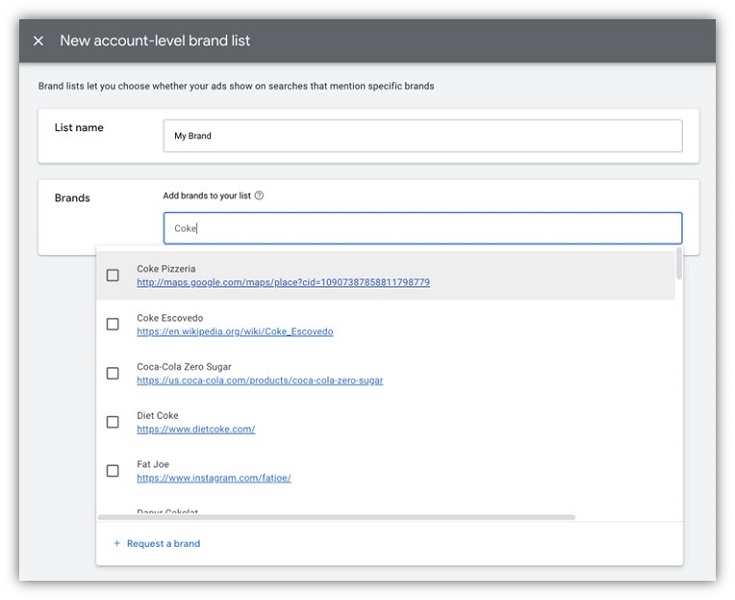

With the rollout of brand exclusion lists, advertisers can effectively stop that Brand bidding and return to non-brand prospecting through PMAX. They’re extremely easy to set up at the account level and can be customized to include sub-brands too.
4. Ability to exclude sites from Performance Max (now including search partners!)
In addition to brand keywords, Google made it possible to exclude display placements from Performance Max campaigns if you leverage account-level placement exclusion lists. This was an amazing update that made it much easier to control the performance of Performance Max campaigns.
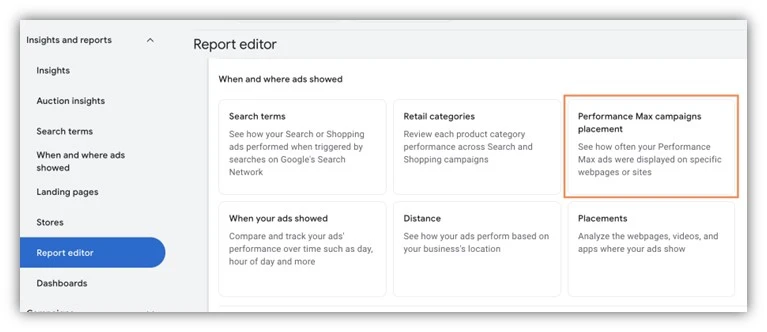

If you weren’t sure which placements you should add, Google created a report where you can see the impression counts for your campaigns on each individual site. It’s not perfect since we don’t see actual conversions, but it did provide some transparency.


In March of 2024, things just got even better. In this help article showing how to create those placement reports, Google said it will now include search partner sites alongside the display placements for Performance Max.
Additionally, when you add a search partner site as an exclusion at the account level, it will now apply to ALL campaigns in your account, Performance Max and Search campaigns alike.
At the same time, Google has removed the ability to opt out of the Search Partner Network altogether for Performance Max campaigns, a change originally meant to be temporary and address the backlash they got from an Adalytics report saying the content wasn’t suitable.
What these Google Ads Performance Max updates mean for advertisers
Despite many updates over the last three years, it’s clear to me that Google’s current focus is on transparency & control of placements and the creative assets used for Performance Max. Whether you’re just getting started and want to start with some Performance Max best practices or if you’ve been running PMAX for a while and you’re trying to stay in the know, it’s important for you to pay attention to these two trends in PMAX and make sure you’re adjusting your campaigns as needed. For more insight into how to, well, maximize your Performance Max campaign performance, see how our solutions can help!
PPC
Share Of Voice: Why Is It Important?

PPC is an industry awash with metrics, many of which are less important than others. One which you cannot afford to ignore is Share of Voice. Beyond “visibility of your campaigns compared to your competitors” what actually is Share of Voice? And why is it important?
By the end of this post, you’ll be in possession of a comprehensive conceptual understanding, plus you’ll be fully versed on how to make use of it to inform your PPC campaign decision-making.
What is Share of Voice?
Share of voice, which you might also hear referred to as SOV, is the metric used to measure the visibility of your brand compared to your competitors. Needless to say, the more market share you own, the more authority and awareness you gain among users and potential customers.
Share of Voice can be used to measure a brand’s share across different digital marketing channels, such as volume of mentions on social media, PPC, SEO, and PR.
Why Is It Important To Calculate Share Of Voice?
SOV is a powerful enough metric to help you understand where your brand stands in the grand scheme, giving you the insights you need to scale, and convert new users.
Here are three areas where SOV can change the game for your business.
1. Track User Conversations
How do you determine your product success across the different marketing channels? Using metrics, of course!
Using social media share of voice metrics to determine users’ opinions regarding certain brands and topics is a terrific idea. The metric does all the heavy lifting to help you align your product or service with the consumer’s thought process and needs.
Share of voice data can help you figure out all of those things consumers are struggling with—a unique opportunity to hit the pain points and offer real solutions.
Let’s assume that your company provides business assessment services. After calculating the SOV metric, the data tells you that many clients aren’t satisfied with your competitor’s lack of comprehensive financial analysis tools. Your best bet is to offer a strong and advanced financial analysis feature to gain that competitive advantage straight away.
2. Keeping an Eye on Your Competitors
No matter what your marketing game plan is, keeping tabs on your competition will always allow you to stay ahead of the curve. Calculating Share of Voice is one of the best ways to do this.
When you paint a clearer picture of what goes into the competitive landscape, you’ll not only have the opportunity to enhance your product, but you’ll also identify unmet needs in the market and create a solid lead generation funnel.
3. Brand Reputation Management
“What about the conversations about my personal brand?” Guess what? You can measure those too! This allows you to slice and dice your data, and see how your brand reputation stacks up against the competition.
Never underestimate the power of those brand conversations, whether they’re about product pricing, performance, new fundraising — or even a small feature update, as they can help you get that first-mover advantage, and enhance your brand reputation.
What’s the Difference Between Share of Voice and Market Share?
Share of Voice calculates brand awareness on a particular marketing channel, while market share refers to the percentage of a market that a business owns, either by income or number of clients.
These two metrics might sound very similar, and they both measure your performance compared to your competitors. Market share, however, is the percentage you get in terms of sales, while share of voice is the percentage of the conversations you earn across various marketing channels.
So imagine you’re in the smartphone industry production, and you’re launching a new model called the Spider Phone. Now, let’s say there are two major players in the market: company A (we’ll call them Techies) and company B (let’s call this Innotech).
For example, if Techies have a 40% market share, this means they hold 40 out of every 100 customers. On the flip side, if Innotech has a 50% share of voice, this signifies that half of the conversations about smartphones in a particular market are dominated by their brand.
How Do You Measure Share Of Voice?
Here is the formula to calculate your brand’s share of voice across all the marketing channels:
Share of voice = (Your brand metrics / Total market metrics) x 100
Getting it right manually will take a little more work than that, since there are variations on certain metrics. The good news is that there’s a whole bunch of tools out there that complete this process with just a few clicks.
Social Media SOV
Social media share of voice is a valuable metric to be in possession of, and it’s not hard to see why. You are actually measuring consumer conversations straight from their actual posts. This is where social media analytics tools can do their magic.
Social media analytics software will automatically identify your brand or product mentions across platforms. You can then benchmark your brand against the rest of the direct competitors.
The features are pretty advanced, giving you a ton of valuable data at your fingertips, while allowing you to conduct a comprehensive social media competitive analysis. You can play around with metrics like impressions, engagement, unique authors, and more.
PPC Share Of Voice
Your PPC share of voice tells you basically how often your ads actually get seen versus how often they could have been seen. Google AdWords helps you measure this through a feature called Impression Share. What this feature does is analyze your campaign and keyword settings to figure out just how far your ads could reach.
Find out your SOV in four simple steps:
- Log in to your Google AdWords account.
- Head over to the Campaigns tab and hit up the columns icon.
- Choose “Modify columns” and then click on “Competitive metrics.”
- Select the impression rate you want to keep an eye on.
PPC share of voice data will tell you how well the campaigns you run are performing and where you should be allocating your budget.
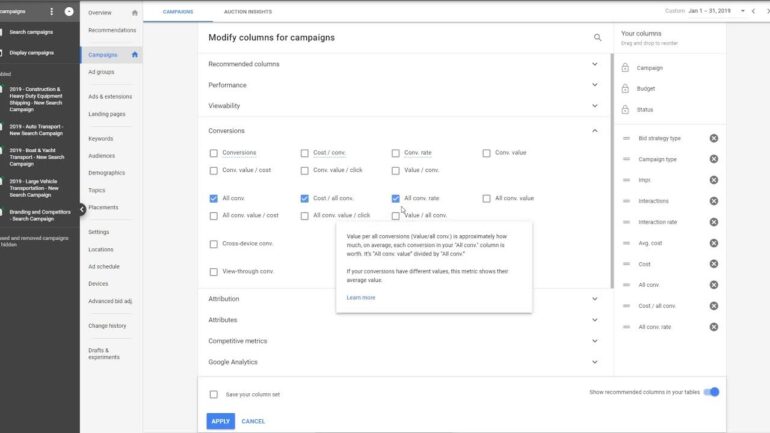
SEO Share Of Voice
When it comes to SEO share of voice, your one-stop solution is SEO tools. The in-built features found in software like Ahrefs, Semrush, and Moz allow you to effortlessly compare your brand’s visibility to your competition.

Semrush’s Position Tracking tool is the name of the game. This tool will reveal the traffic your website is getting for a targeted keyword compared to your competitors.
It’s simple to set up a Position Tracking campaign, conduct a keyword research and list out these targeted keywords. Once Semrush does its job and updates its data, you’ll see your share of voice right there on the main graph in addition to other metrics like average position, visibility, and estimated traffic.
Best of all? You can seamlessly switch between each metric to see how you compare in each one.
Amine Boussassi is a Marketing Manager for Hustler Ethos.
-

 PPC6 days ago
PPC6 days agoCompetitor Monitoring: 7 ways to keep watch on the competition
-

 SEARCHENGINES6 days ago
SEARCHENGINES6 days agoMore Google March 2024 Core Update Ranking Volatility
-

 PPC6 days ago
PPC6 days agoA History of Google AdWords and Google Ads: Revolutionizing Digital Advertising & Marketing Since 2000
-

 PPC6 days ago
PPC6 days ago31 Ready-to-Go Mother’s Day Messages for Social Media, Email, & More
-

 WORDPRESS6 days ago
WORDPRESS6 days agoThrive Architect vs Divi vs Elementor
-

 WORDPRESS5 days ago
WORDPRESS5 days agoTurkish startup ikas attracts $20M for its e-commerce platform designed for small businesses
-

 MARKETING4 days ago
MARKETING4 days agoRoundel Media Studio: What to Expect From Target’s New Self-Service Platform
-

 SEARCHENGINES5 days ago
SEARCHENGINES5 days agoGoogle Search Results Can Be Harmful & Dangerous In Some Cases



You must be logged in to post a comment Login